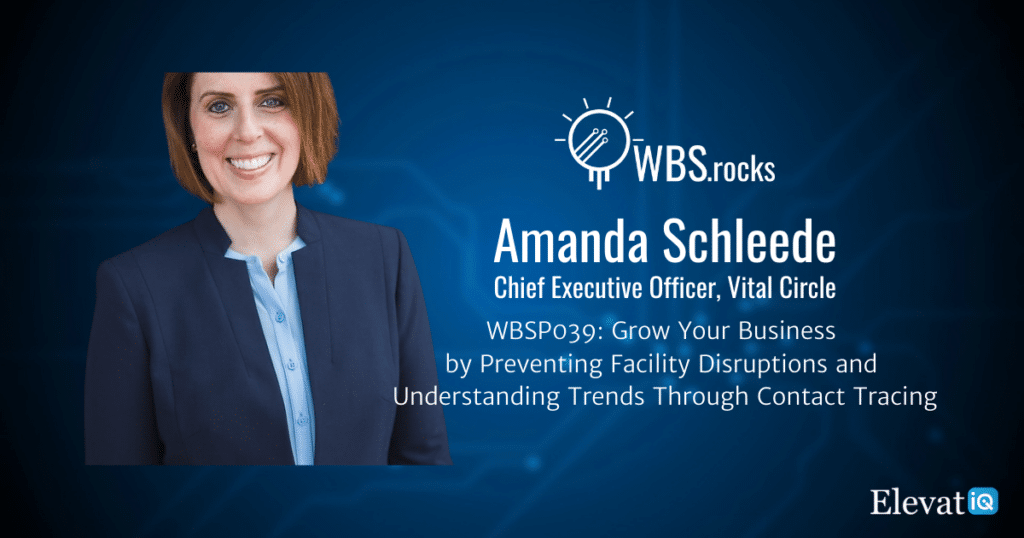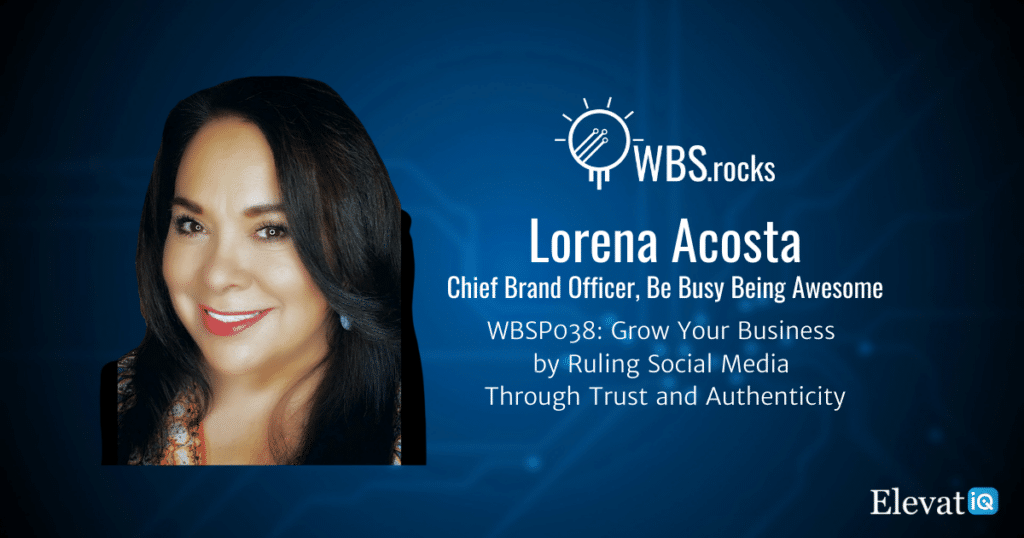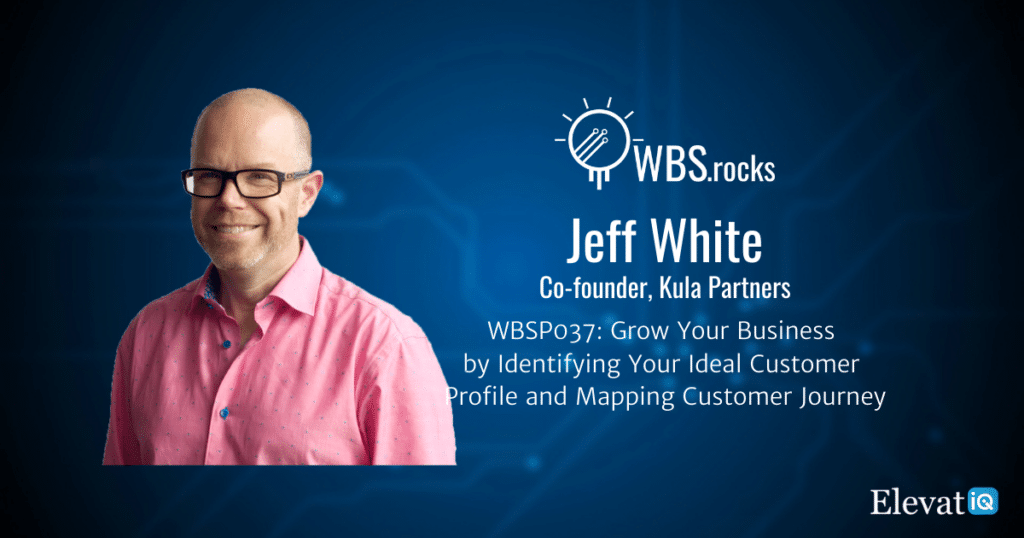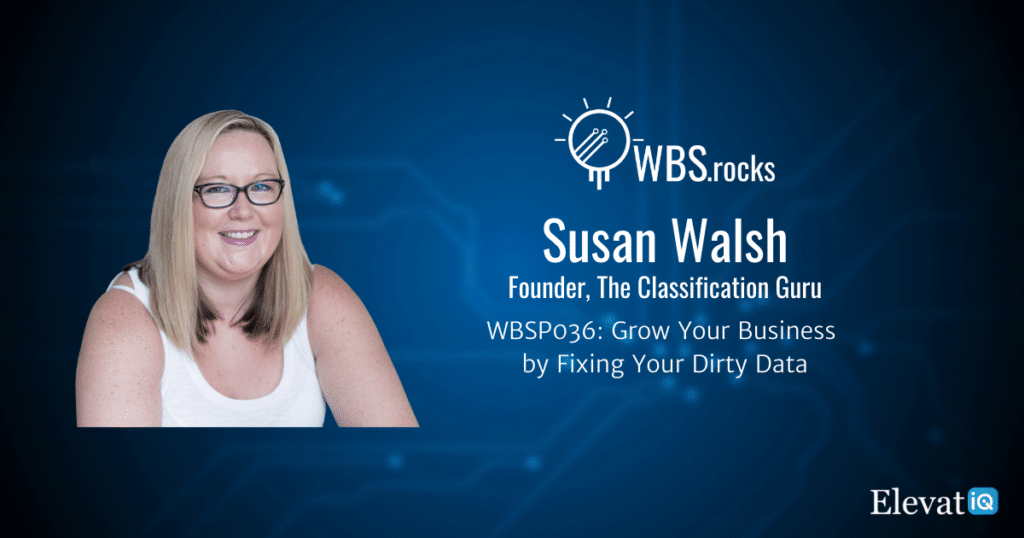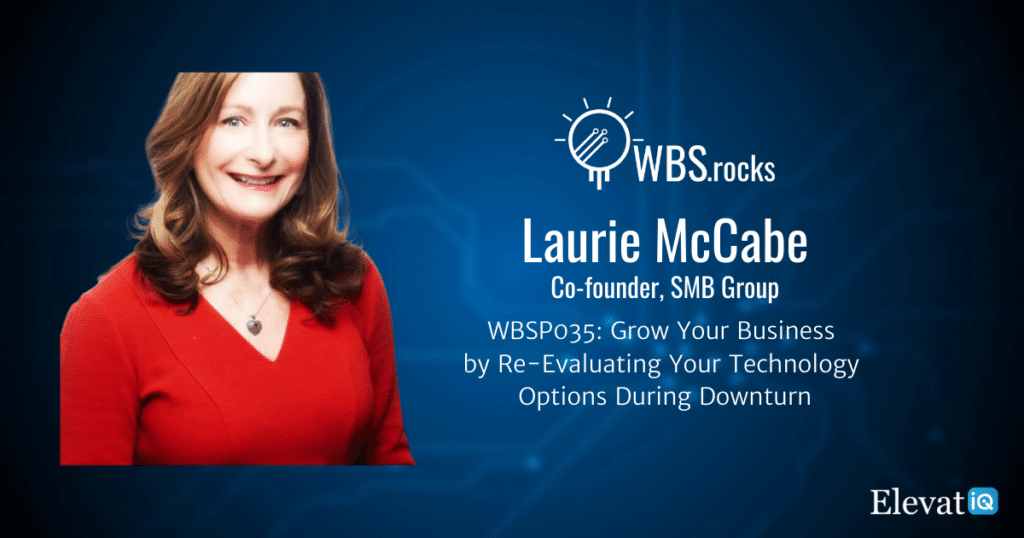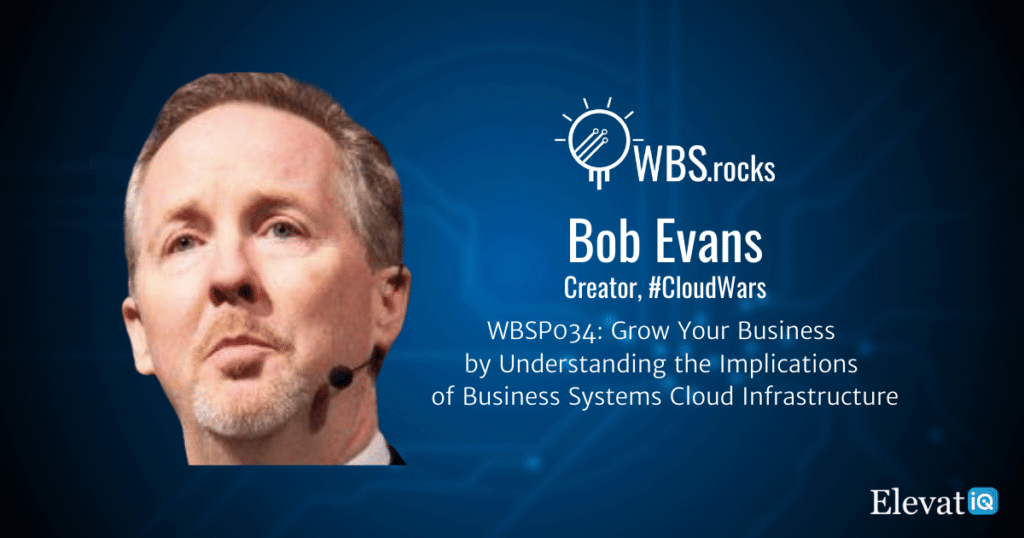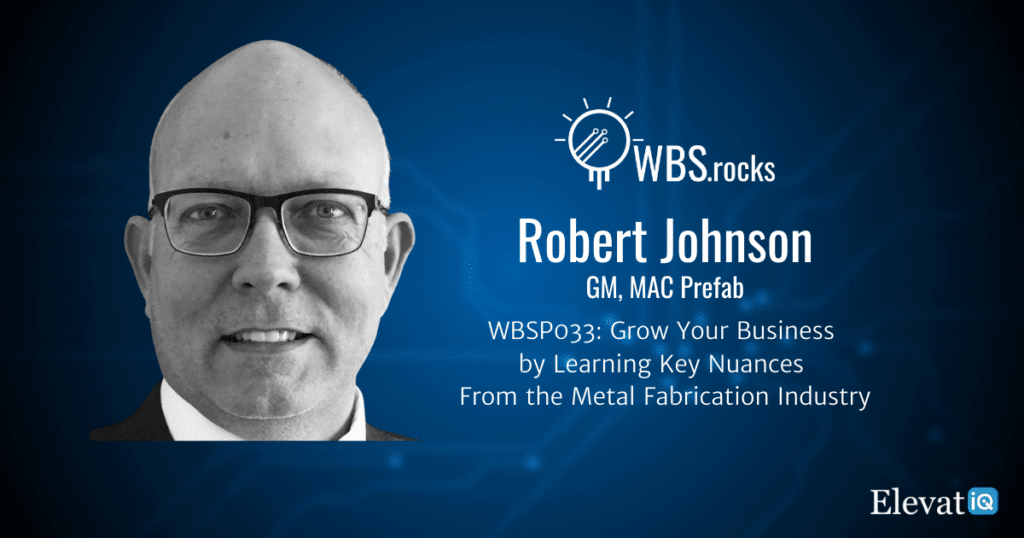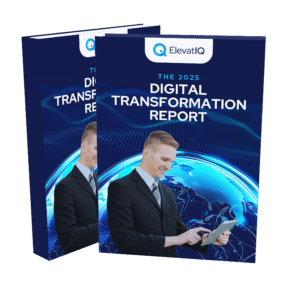WBSP042: Grow Your Business Through Innovative Packaging w/ Mark Oser
In this episode, we have our guest Mark Oser from Anteris Consulting Group, who discusses How to launch new products through innovative packaging. He also shares his insights into how to take new product packaging ideas from concept to design. Finally, he sheds light on design challenges that COOs and CFOs must be aware of, before launching a new product line.
Chapter Markers
- [0:21] Intro
- [2:15] Personal journey and current focus
- [3:00] Perspective on growth
- [7:02] How to take innovative packaging ideas from concept to design?
- [9:01] How to test the feasibility of a innovative packaging idea?
- [13:52] The implications of poorly planned packaging
- [18:51] Recent innovative packaging trends
- [22:07] Industry-specific packaging trends
- [26:09] How to work with packaging vendors?
- [28:35] Building internal packaging capabilities vs outsourcing it
- [33:06] packaging KPIs
- [35:47] Closing thoughts
- [36:57] Outro
Key Takeaways
- Companies are switching to plastic pouches right because the plastic pouches can be printed more effectively. They’re resealable. They have a lot of technical properties that are better than paper. And also, you can print them a lot nicer, so you get a better-looking product.
- Anybody who’s been involved in consumer manufactured goods or consumer packaged goods company knows that there are several constituents that get their hands in packaging, you may have marketing. You may have R&D. You may have Ops. Eventually, you’ll deal with procurement. You may have sales. So if you don’t include the right people early on in the process, you’ll get something that sub optimizes the output from one of these constituents.
- Typically, marketing and R&D come up with a need. They say, hey, I want to make it out of this material. Okay, they turn it over to procurement and go out to get this material, and then by the time it gets ready for launch, there may be a problem with operations, it may not fill correctly. There may be something with how it ships.
- The advancements in digital printing have actually allowed digitally printed corrugated cases in longer runs to be price competitive with their flexographic counterparts.

Subscribe and Review
Apple | Spotify | Stitcher | Google Podcasts | Deezer | Player FM | Castbox
About Mark
Mark Oser has been involved in corporate procurement for the past 27 years, with the last 12 years focused on innovative packaging. Throughout his career, he’s worked with more than 100 companies on procurement-related issues, and led 30 packaging sourcing and technical design efforts covering nearly $200MM in spend and delivering over $30MM in one-time and recurring benefits.
Resources
Full Transcript
Mark Oser 0:00
And then all of a sudden, they started shipping it, and due to the shape of it, it wouldn’t stand up, so the packaging wouldn’t work because the things were frozen, they were tilting, they were falling. And then nowadays, as you know, in retail, most retailers want display-ready cases. So by the time they tried to put this into a display-ready case, the great beautiful innovative packaging design wouldn’t work.
Intro 0:21
Growing a business requires a holistic approach that extends beyond sales and marketing. This approach needs alignment among people, processes, and technologies. So if you’re a business owner, operations, or finance leader looking to learn growth strategies from your peers and competitors, you’re tuned into the right podcast. Welcome to the WBS podcast, where scalable growth using business systems is our number one priority. Now, here is your host, Sam Gupta.
Sam Gupta 0:58
Hey everyone, welcome back to another episode of The WBS podcast. I’m Sam Gupta, your host, and principal consultant at a digital transformation consulting firm, ElevatIQ.
Product packaging is as important as the product itself. Poor packaging could cause issues with delivery failures and increase returns. These issues typically lead to a bad customer experience. In today’s episode, we have a guest, Mark Oser from Antares consulting group, who discusses how to launch new products by simply changing the packaging. He also shares his insights into how to take new product packaging ideas from concept to design. Finally, he sheds light on design challenges that CEOs and CFOs must be aware of before launching a new product line.
Let me introduce Mark to you.
Mark Oser has been involved in corporate procurement for the past 27 years, with the last 12 years focused on innovative packaging. Throughout his career, he has worked with more than 100 companies on procurement-related issues and led 30 packaging, sourcing, and technical design efforts covering nearly $200 million spent and delivering over 30 million in one-time and recurring benefits.
With that, let’s get to the conversation.
Hey, Mark, welcome to the show.
Mark Oser 2:12
Thanks, Sam. Good to be here. Appreciate it.
Sam Gupta 2:15
Of course. Just to kick things off, do you want to start with your personal story and your current focus?
Mark Oser 2:21
Sounds great, Sam, by way of background, Mark Oser here. I’ve been involved in the world of corporate procurement now for, geez, I guess, 27 years. That’s a long time. For the last 12 years, I’ve been focused singularly on innovative packaging. So throughout my whole career, yeah, I’ve worked with probably more than 100 companies on procurement-related issues. In the last 12 years of lead, probably 30 packaging sourcing or technical design efforts. And I imagine that covers probably $200 million worth of spend. Of that, the team has delivered about 30 million a year in recurring benefits.
Sam Gupta 3:00
Amazing. So one of the standard questions that we have for all of our guests before we dig deeper into your background and some of the interesting stories that you have. What is your perspective on business growth?
Mark Oser 3:12
Well, business growth is challenging, particularly in this market. Not only is business growth challenging, but within the growth. Generally, you’ve got the packaging space, which is frankly in a very chaotic state right now. So what we do is we view packaging as both an opportunity to cut costs to improve operations but also a way to deliver growth through new innovations and to package through better appearance through better user experience. So we look at it as a two-pronged approach. One is the possibility of cutting costs and putting money to the bottom line during a troubling time. And the second is to really drive new growth.
Sam Gupta 3:49
Amazing. And I find the packaging to be fascinating. Because just by changing packaging, you can launch new products. So and you have been doing this as part of your focus. So tell us how manufacturers can explore the path for new products by simply changing the packaging.
Mark Oser 4:06
That’s a really good question, Sam. And I’d like to approach it kind of in two pieces. So you mentioned the term changing packaging. Well, that’s certainly one of them. One of the options, another would be totally launching innovative packaging. So let’s take the first part, which is how do you change packaging? Well, this gets a little challenging. So, for example, let’s say you’re marketing pet food, and you’re producing it, and your operations are set up to run pet food in 25-pound multiwall paper bags, which has a traditional way of selling pet food. Well. Right now, many manufacturers and many consumer pet food companies or pet food companies are switching to plastic pouches right because the plastic pouches can be printed more effectively.
Mark Oser 4:52
They’re resealable. They have a lot of technical properties that are better than paper. And also, you can print them a lot nicer, so you get a better-looking product. So simply, it sounds kind of easy, right? Well, you just say, Okay, I was buying paper, and now I buy plastic. So what?
Well, the challenge is they fill differently. It’s different from filling a paper bag versus a plastic bag. You’ve got testing that has to occur, right? You just can’t just say I’m gonna switch it to plastic and make sure it works. You’ve got to go through testing. The testing can be a bit complicated. Then you’ve got to source the plastic bags and figure out am I paying the right amount of money? What’s it costing me for the proper finishes to make the product really catchy? So there are so many different elements of it just to switch innovative packaging? That’s number one.
Mark Oser 5:33
Sam, I think the second part was, okay, what if we launch an innovative packaging? Yeah, yeah, that’s where it gets really complicated. Because anybody who’s been involved in consumer manufactured goods or consumer packaged goods company knows that there are several constituents that get their hands in packaging, you may have marketing. You may have R&D. You may have Ops. Eventually, you’ll deal with procurement. You may have sales.
So if you don’t include the right people early on in the process, you’ll get something that sub optimizes the output from one of these constituents. So, for example, we had a product that we were working with a company in California, they make bagged salad and fresh-cut vegetables. For years, they were buying their corrugated boxes from the same supplier we came in. We were looking at creating a lighter-weight design that used less raw material and also improved the look and feels corresponding to a relaunch of the brand and updated branding.
And what we realized is the print quality of what they were getting was just subpar. So by bringing new suppliers in who had state of the art equipment, including digital print, all of a sudden, the client realized that they weren’t even getting the correct colors that they were specifying because they didn’t know. So again, bringing procurement bringing somebody with that kind of expertise in the process earlier would have identified this opportunity sooner and created a smoother transition to get the finished product the way they wanted it interesting.
Sam Gupta 7:02
So let’s say if somebody does not have as much experience with respect to packaging innovations, and they are trying to explore ideas where they might want to increase their sales just by changing the packaging. So what is involved in taking new product packaging ideas, from concept to design?
Mark Oser 7:21
Yes, well, now you have a very complicated process. And to be honest, I don’t think a lot of companies have a great process for this. Typically, marketing and R&D come up with a need. They come up with a new product, right? They say, hey, I want to make it out of this material. Okay, they turn it over to procurement goes out, get this material, and then by the time it gets ready for launch, there may be a problem with operations. It may not fill correctly. There may be something with how it ships.
I’ll give you a really interesting example. Obviously, I can’t use client names because we’re under confidentiality with our clients. But we had a company that was getting into the guacamole business. And guacamole is a very interesting product. It’s largely produced with avocados grown in Mexico. Avocados are frozen and, or excuse me, mixed into guacamole. And then that product is frozen.
Mark Oser 8:07
Well, R&D came up with a novel way to dispense guacamole. But testing it in the actual shipping environment wasn’t brought in. And the procurement people weren’t bought until later in the process. We always encourage that you bring up, so you bring procurement in early. So they designed a new, a new dispenser. They thought it would be great, and then all of a sudden they started shipping it, and due to the shape of it, it wouldn’t stand up.
So the packaging wouldn’t work because the things were frozen, they were tilting, they were falling. And then nowadays, as you know, in retail, most retailers want display-ready cases. So by the time they tried to put this into a display-ready case, the great beautiful innovative packaging design wouldn’t work. So then you have a code red problem where you have to bring us in and figure out why is it failing? And what can we do in the short term to figure out how to get it right. So there’s a great example of the process, how it should work, how it really works sometimes. And then here’s a real-world example of what happens if you don’t do it that way.
Sam Gupta 9:01
So let’s say if I am the manufacturing executive. And obviously, I can see the challenge in terms of designing this and testing the feasibility. So there has to be some sort of testing done before I invest in creating the actual process or production line.
So what will be involved in doing the feasibility testing, and the only way to do the feasibility testing is going to be number one, involve all of the parties and then do the appropriate testing whether this is going to work in the real world, and then finally decide whether this is the right innovation that I really want to operationalize it. Right. So what will be involved in testing the feasibility? Can you touch a little bit deeper into that?
Mark Oser 9:42
Sure. Okay. So let me ask you a question. I’m gonna ask you to answer your question with a question. Let’s say you’ve got a great idea coming from marketing and R&D. Let’s say you’re a smaller company, you know, $500 million – $800 million. You don’t have packaging engineers on your team. Who do you call to get this information? How do you get this information on how this product to be packaged?
Traditionally, you call packaging suppliers. Well, packaging suppliers are in the business of selling you more packaging and selling your packaging that’s easy to produce. So again, what’s missing in most cases is the internal capability to design the packaging effectively. Early on in the process, working as a partner with marketing working as a partner with research and development, too often, it happens that marketing and R&D come up with the product, you figure out with a packaging supplier how it should work. And by the time it’s operationalized, something’s amiss.
Mark Oser 10:33
So the way you solve that is you have, First of all, if you’re lucky enough to have this kind of packaging resource in your company, you bring them to the table early, you bring them to the table working with R&D, working with marketing, and at the same time you test different samples, different prototypes, you do ship testing.
We have all kinds of protocols that we’ve helped customers and clients derive or design, I should say, and you follow the protocol, what happens a lot of times is they’re driven by what the client or the what the ultimate retailer wants, and they say, hey, this will work. And they don’t do enough sufficient testing or enough high-quality testing. And then there’s some kind of an issue down the road.
Sam Gupta 11:12
Amazing. So let’s say if I were the CFO of a manufacturing organization. Obviously, one thing that I don’t want to see is if I invest in something, then I’m looking for some sort of ROI. And if these initiatives are going to fail, then obviously, I’m probably not going to get any of the ROI. So what are some of the issues or the investment planning that I should be aware of as a CEO or CFO, well?
Mark Oser 11:36
CFO and CEO would attention potentially have slightly different motivations and different interests in this? Let’s take, for example, a CFO, right? a CFO is looking for a return on investment. They’re looking to use the company’s dollars in a manner that produces the greatest possible return or for other strategic purposes. So before any project that I’m aware of, typically, people internally, usually R&D or some business person, come up with a business case for investing in this.
Yeah, right. Say, Oh, I want to launch this new product. Well, is the market there? Yes. Okay. Can we produce it? Yes. Okay, what else do we need? Well, we need to design a new line. Okay. So typically, there has to be a business case, where I’ve seen a lot of business cases fall down, is they don’t understand the packaging process, or they don’t understand the real cost of the innovative packaging, and they underestimate it. Okay, that’s one.
So to satisfy a CFO, all these points should be figured out early on in the process. So you can come up with a far better, far more ironclad business case.
Mark Oser 12:36
That’s number one with respect to CEOs. Now you’re talking about, okay, R&D has come up with this great new product, it fits with a marketing need, we can brand it, we can market it, we know there’s an audience in a customer base interest in it, how do we produce it? Right? I’ll give you a great example.
We’ve seen clients come to the table with a brand new product, the right product, the right, branding, everything, right, but they don’t have the capability to produce it efficiently. So now you’ve got it invested in as a CEO would see you got to put capital expenditures potentially on the table in order to produce the product correctly.
Okay, well, that’s where a CEO should be brought in early. And that’s where somebody with exceptional packaging knowledge to say, hey, is there another way to produce this innovative packaging? Could we use an alternative design of the innovative packaging that doesn’t require such an investment in infrastructure or CapEx, such that it can be produced correctly in the plant?
So there are all kinds of different permutations that arise from this. But the bottom line is, and the biggest issue that we see is that these constituents are never working together. And the last piece of the constituency procurement is not brought in early enough. And then, if they are brought in early, they may not have the requisite packaging expertise to make something like this work. That’s when you end up with a failed product for a failed project.
Sam Gupta 13:52
Okay, amazing. So we are going to be touching on three stories from the packaging perspective. And from your experience, obviously, you have done a lot in the packaging and procurement space, right. Let’s say if you were to pick on three stories that were, like, super terrible innovative packaging ideas that they shouldn’t have been even considered.
So tell us those three stories where the idea was just terrible, they shouldn’t have considered it, and they ended up losing money. So those three terrible and three awesome ideas as well, where they probably got bottom-line growth or the top-line growth.
Mark Oser 14:27
Well, I see a lot of terrible stories. I don’t necessarily call them terrible. Instead, I call them the situation, Sam. I mean, with all due respect, right. So people do put a lot of effort into this.
Mark Oser 14:42
Yeah, I would say this guacamole story had a very interesting situation. Well, not only was I think I referenced earlier the novel way of dispensing the guacamole and how that led to failures in the shipment, but ultimately at the third retailer told us a shelf that was correctable with corrugated inserts and etc.
But I’ll tell you another one that was like that that went wrong also happens to be in guacamole. Not that we cornered the market on the packaging of guacamole. But we happen to have people who produce guacamole that need innovative packaging help; we had another situation where now, as I mentioned, guacamole is produced, and it’s frozen, right? And then typically, it’s either thought out in route from the manufacturer to the customers, disease or the customer shells.
Mark Oser 15:33
Well, when you thought out guacamole, what occurs? Well, you’ve got condensation, okay? Anybody who knows corrugated boxes knows that condensation or water is like the kryptonite to corrugated boxes. So now you’ve got condensation, you’ve got boxes that are crushing, you’ve got boxes that are failing, you’ve got deformation of the boxes, and quite frankly, they just look ugly.
And so when a retailer receives a box that has water damage, they’re very, very likely in many cases to reject it. Well. So now you’ve got a reverse logistics problem, you’ve got a sales problem. Okay. So once again, this is a situation where they didn’t have packaging engineers looking at and packaging experts looking at what would happen throughout the lifecycle of this box from the time it’s thawed to the time it’s delivered.
So there were two things, for example, that we came in to do. Number one is we changed the way the boxes and the guacamole were racked in the manufacturing such that the condensation would be worn off or be experienced early on before it’s put into its final boxes. Alright, that was another way to solve it. So it was a process change, if you will, yeah.
Mark Oser 16:43
And then where that was not feasible, we looked at another change, which was to use something called solid board, while there are certain types of the board in packaging that have either poly coating or some sort of a wax coating or other types of impregnation into the paper where you can reduce the damage or the permeability of the water.
So again, that was just not thought of early on in the process, created problem created two problems. And then they had to bring us in to solve the problem. So there’s, there are two really good examples off the top of my mind where something like that fails. I’ll give you another great example of something that worked. We do a lot of work with direct-to-consumer companies. And we have one client that makes organic direct to consumer, custom-blended lawncare. And so the current design of the packaging was such that they were concerned about, you know, shipping liquid inside of a pouch, that the pouch would somehow be exposed to forces in the shipment, and then the innovative packaging would fail, it would leak, and that would be a problem.
Mark Oser 17:51
Okay, so to their credit, they did a lot of thinking about this. Well, we actually looked at it, and we brought our top designer who happens to live in the Netherlands to look at the problem. And we were able to figure out a new design for the corrugated box to ship it, to shift it rather from a horizontal axis to a vertically packed design. The vertical pack design also achieved lower dim weight.
So we were able to get the new design into more favorable dim weights, which reduced the cost of the shipping dramatically. By changing the orientation of the innovative packaging and creating inserts, we were also able to reduce the frequency of damage. And it is well cut out an entire processing step where they used to kind of sub package each liquid-filled pouch our packaging obviated the need entirely for that step.
So that’s a double win, or actually, a triple win, save money on the corrugated, save money on the innovative packaging, reduce the failures and save money on the ship. So there are three examples of wins off of one project.
Sam Gupta 18:51
so obviously, you spend a lot of time in the packaging industry, right. So what are some of the things that you’re most excited about, from the trend perspective, from the macro perspective, that you think that manufacturing companies or DTC companies should actually take advantage of?
Mark Oser 19:06
Okay, that’s great, a great question. Number one is Advent and the advancement of digital printing. Okay, so if you look at a corrugated box, traditionally, they’re printed what we call flexure. Graphically, so they have printing plates, they run them over these machines, they print them, etc.
It’s the way that printing has been done for many, many years. Well, digital printing has been available on corrugated on film and whatnot, but it’s been typically restricted to smaller size runs. If you’re going to make a new product offering, you may want to do it digitally, so you don’t have to invest in printing plates, etc. Well, the advancements in digital printing have actually allowed digitally printed corrugated cases in longer runs to be price competitive with their flexographic counterparts. So that’s a huge, huge advancement.
Mark Oser 19:52
What that gives you gives you the ability not to have to pay for print plate B, being able to change overruns at the same time. Almost instantly, from one SKU to another, you can literally print two or three SKUs on the same sheet digitally at the same time. So operationally, from branding from an appearance standpoint, from an aesthetic standpoint, from an operational standpoint, digital printing is now offering a lot more advantages, and we see that trend poised to continue.
In other words, we feel that further advancements are coming, and digital is going to be even more of an option for companies where it wasn’t in the past. That’s a very large trend. Another really interesting trend right now is obviously towards sustainability. Everybody throws out the word sustainability. Well, there’s only so much you can do, right?
Mark Oser 20:41
If you want to have a say, a plastic pouch that has certain properties and certain barrier properties. To store your food or your product effectively, you might need something called a laminated design. Well, laminated materials are generally not recyclable. So there’s a concern about sustainability, biodegradable films, and there are advancements in that area that are coming. Where we see the move towards sustainability in the shorter term that can be achieved by most companies is the number of materials being used to produce a package.
For example, if you have a corrugated box that requires 15 square feet of material to make one box, and using our engineering capabilities, let’s say we’re able to reduce the weight of the paper, reduce the amount of the paper, now you’ve got a new package that says uses 15-18%, less paper it well, that’s environmentally friendly, that’s something you can tell your customers that, hey, our new design cut out 15 or 17, or 18%.
Not only that, you, as the buyer of that packaging, save money because, for example, in a corrugated box, 70-75% of the cost is paper. If you take out 16% of the paper, you’re now saving 12% on the box with no sourcing activities required. So that’s the other big trend that’s going on right now. A lot of what we’re seeing right now is how we can design innovative packaging that performs better with less material?
Sam Gupta 22:07
Interesting stuff? And do you see these trends across the manufacturing sub-industries as well? Do you see, let’s say you provided a lot of examples from the food and beverage perspective, right. But when we look at the CPG space, there are many different products, and they all are going to have different innovative packaging needs. So are you seeing similar trends here? Do you see any different trends in any specific industry where one particular packaging material is not going to work or may not be as effective?
Mark Oser 22:35
Generally, Sam, we see the trends across all things that are packaged. Okay, so we see that as universal trends. But let me tell you a very interesting story that we’ve been recently brought into that we’re studying right now, we have a potential client that is in manufacturing of components, that I can’t even tell you what they’re in because it’s very confidential, but you’re using an industrial setting, let’s just say, yeah, and these components are heavy, and they’re dense.
And right now, the company is packaging them in crates. So for each shipment, they’re going to put one, two, or three components into a custom-built crate. Okay, yeah. Well, what’s going on with the price of lumber? Well, the price of lumber is skyrocketing. What’s going on with the price of labor, the people who create the crates? It’s skyrocketing. So all of a sudden, these crates are enormously expensive. Plus, what happens when a customer receives a crate? Well, that’s very difficult to open.
And then what do you do with the lumber, right? So all of a sudden, you’ve got disposal issues, you’ve got customer issues, etc. We are actually looking at creating corrugated alternatives, very, very heavy paper corrugated alternatives to take the place of actual wooden crates. So you talked about, you know, what are some of the trends that people are looking at? You asked if there are different materials. Here’s a great example of things that have typically be done been done with wood.
But now, with the Advent of the advancement in heavy paper manufacturing, there are now opportunities to change that to corrugated. And that’s something that we’re looking at a lot right now, in this market.
Sam Gupta 24:10
Okay, and let’s talk about a little bit of enterprise health and safety. And you did mention a little bit about sustainability as well. If we purely look at it from the injury perspective of the employees, and you made some of the comments that you know, some of these lumber things can be very difficult to open.
Some of the packaging trends that you might be seeing at this point in time could not be as friendly for humans to be able to work on those innovative packaging designs. So do you have any stories where the human experience wasn’t as good when you had a specific type of packaging?
Mark Oser 24:44
Well, let me see if I could narrow that down. I have a very interesting I thought to share on this one, Sam. Yeah. So what we see in a lot of cases is packaging has been designed to fit whatever the product is, well, and typically CEOs and CFOs calculate the cost of that innovative packaging. Well, the second half of that equation, Sam, is how do you pack out? Or how do you fill the packaging?
And in a lot of cases, packaging, whether it be a crate, or whether it be a corrugated box or some unusual corrugated or paper-based container. In many cases, what’s not optimized is the person who needs to pack out that container. So it’s very complicated. And so it might take somebody 30 or 45 seconds to either erect the case and then another 45 seconds to pack out the case.
Well, that costs money, especially if you’re in a DTC environment where you’re paying 3PL partners to do the packing out. So a lot of what we’re also looking at is designing innovative packaging that fills easier that he wrecks faster that a user can be more comfortable with less repetitive motion, easier to open, and easier to pack out.
So there you create a benefit where the person who’s picking out the product is happier because I got an easier box to work with the customer or the client that’s supplying it gets an advantage because now it can be packed out quicker. And that results in another below-the-line cost reduction for ops people and CFO people.
Sam Gupta 26:09
Okay, so let’s talk about some of the manufacturing startups. They might not have as much capital to be able to afford, let’s say the packaging engineers or packaging line in the house. In our experience, if they are not, let’s say D2C, and they might be packaging slightly bigger products, they typically hire 3PL, as you mentioned.
So that’s going to be an outsourced packaging scenario. And in this particular case, let’s say they are hiring a vendor to be able to do their entire packaging to they’re going to ship out the product, they this vendor is actually going to do the packaging. So let’s say if you are the CFO or the CEO, and you are vetting a vendor who might be able to do packaging for you, what are some of the questions or some of the things that you would look for in assessing this vendor?
Mark Oser 26:54
Okay, number one is I would want to see the relationship with the vendor, and let’s assume we’re talking about a 3PL right now. Okay, yeah. So if you’re talking about 3PL, I would want to know what their capabilities are in terms of innovative packaging, design. Maybe they have somebody on staff that can help you figure it out. But my fear is, and what we see typically, is that 3PLs or outsourced distribution partners are not in the business.
In most cases of designing innovative packaging, they’re in the business of packing it out and calculating how much time and labor it costs to do what you’re looking for. So there’s typically not a direct incentive for them to redesign the packaging. So we feel that should come from the person who’s manufacturing the product.
Secondly, if we’re vetting somebody out, we like to understand what kind of room they have for machinery. So, for example, if we wanted to install an automatic case erector, which is something that is great because you can just feed sheets in erects the boxes that a person no longer has to do.
Mark Oser 27:54
Okay? Well, there’s an advantage to that it’s less expensive, it requires less labor. So we want to make sure that the person that we’re evaluating the company that we’re evaluating as a potential 3PL or distribution partner has access capacity capability to bring in packaging machinery, so case erecting, etc., printing other stuff that they can be done in house.
So a lot of it has to do with what you’re producing and then trying to match up what the best 3PL or distribution partners would have that complements what you need. Some of them might not have it, some of them might, but these are the questions that you’d want to ask early on in the process, not just assume or wait till the end to figure out they don’t have what you do.
Sam Gupta 28:35
Okay, amazing. And some of the trends that I have personally seen, especially on the packaging line, some of these packaging suppliers, they are renting out their machines, they are also providing the training to the internal employees. So traditionally, if you were to basically acquire a machine, obviously, that’s going to be a CAPEX for you as a CFO, but now it has become more of the operational expenditure in terms of almost renting out this machine.
So let’s say if you had a choice between renting out a machine from the packaging supplier, and they are going to be providing the training, would you rather do that? Would you rather get a machine and build your internal capabilities? What would be your perspective on that?
Mark Oser 29:16
That’s a really, really timely and prescient discussion to be having, Sam. Okay, we see this all the time. And we see, for example, in the box business, there’s box designer, so for oblong shaped or unusually shaped items like furniture, cabinets, window coverings where you’re never producing the same size. There’s a lot of companies that have moved to us machines that take in a corrugated sheet, and then it’s custom cut to fit the size.
Well, that’s great. Okay, we understand that there’s a great, a great argument to be made there. There’s a business case to be made there. Here’s where it gets complicated. So in our business, we are big fans of disintermediating and understanding all the costs in a process, and so what happens is when you give somebody a machine, you’re not really giving it to them. You’re basically giving it to them so long as they buy whatever the input is from you.
Mark Oser 30:11
And the input, in this case, is corrugated. So there is a very simple business case that can be constructed. That tells us, okay, the machine cost $10,000, or $20,000 to $50,000. And you are paying, let’s say, we calculate $90 per 1000 square feet for your corrugated sheets. Okay, well, we know that the market cost for those corrugated sheets could be $70 per 1000 square feet. So we can then calculate very quickly that you’re overpaying potentially by, say, $20 per 1000 square feet, well, that’s great, depending on how many square feet you actually produce.
So what we like to do is we like to disintermediate the costs and make a real business case, and at least help people understand is the business case is more attractive to buy the piece of machinery and then control the inputs, or get the supplier of the machinery to subsidize the machinery at the expense of then buying the raw materials from them, it’s a very common business case to look at. It is typically, in our experience, very strongly in favor of the Machine Company as opposed to the customer.
Sam Gupta 31:19
Okay, amazing. And let’s talk about a little bit more from the process perspective. So obviously, when you are doing these packaging innovations, that’s going to be a change in the operational process. And that’s probably going to be a change in the RFP processes as well if they are using, let’s say, barcoding as part of the process.
So what would be your thoughts in terms of making the integration smooth with respect to the ERP system? And I don’t know whether you recommend an ERP system as part of the process because that’s actually going to expedite the process of innovative packaging. What is your recommendation overall? Number one, the process interaction with a system that is number one, and number two, if you are going to be requiring any changes to support the new process?
Mark Oser 32:02
Well, full disclosure, my expertise is not an ERP system. However, I have worked extensively with companies that have very effective ERP systems and companies that don’t, yeah, and what our big recommendation is, however, a product is designed. However, it’s going to go through the manufacturing process once it’s approved, once it’s vetted, once it’s tested, is that it be processed, driven, and process-driven.
So you can measure fault. So you can measure failure, you can do root cause analysis. I’ve always found that some sort of an ERP or some sort of a system that tracks. This is ideal. The difference in how robust these systems are has been obvious to us over the years.
I mean, we don’t have one favorite versus the other yet. But you can see when you’re on a manufacturing floor whether a system is in place that can track the metrics and the data that we would suggest, and then the client is able to draw a conclusion from that. So we always suggest if a company has an SRP and contract, these processes can document these processes. That’s the best way to go forward.
Sam Gupta 33:06
Okay, so what are some of your favorite KPIs that you are going to recommend to a CFO or see all that they should definitely be measuring? As far as the success of your packaging innovations goals?
Mark Oser 33:16
Okay, well, obviously, you’re looking for failures. And failures can be defined as a lot of different things. So, for example, if you’re getting returns, yeah, that’s how you find out that there’s a problem. Obviously, you don’t expect to see something blow up on the line or fail on the line.
But if you did, you would, you would identify that, but typically, the best data comes from failure. So you’re getting something returned, why is it being returned? Okay, did the package break during transportation, so tracking all the data will help you get back to a root cause analysis. I will give you a really interesting story.
And again, I can’t share the client’s name because we’re under confidentiality, but a very well-known CPG manufacturer was producing protein-type bars or health bars. And when we did our factory tour, we always liked to look at how things were being produced, how the packaging was being used. Yeah, they had a case wrapper.
Mark Oser 34:09
So essentially, they would be auto-filled with the protein bars, and then the case will be erected, if you will, around the bars. And we saw that this machine was shut down for several hours a day. And we started asking the operators of the machine to say, Hey, what’s going on with this machine? It said it’s just not working. It shuts down.
So this was brought up to the CIO. Yeah. And they had already obtained CAPEX in the next budget to upgrade the case erecting machinery. And so that’s obvious, I guess, answer. So when we started looking at it, we kind of got a good sense as to why it was failing. So we actually traced it back to the corrugated supplier. We went back to their warehouse where they’re storing the raw corrugated before it’s used on the floor and found that the corrugated manufacturer was strapping the bundles too tightly, which was causing the boards too.
Mark Oser 35:00
When you put a warped board in a case reactor, it will literally shut down the case erector. So there the situation was, it didn’t even need a new piece of machinery. They needed a new corrugated supplier that had better quality control. So again, failure is something that you can look at from, hey, it’s shutting down three hours a day, let’s replace the machine.
Or, if you really have particular insight and expertise in packaging, in this case, we were able to trace it back upstream and find the root cause had nothing to do with the machinery. It was really the fact that the supplier was strapping the boards to titan that they should have known not to do that.
So, Sam, these are real things that happen. And that’s why looking at things comprehensively looks at things from how the machines work to the inputs to the machines to the raw materials that go into it. Looking at it comprehensively is always, in our opinion, the best case, right, amazing.
Sam Gupta 35:47
So it has been an insightful conversation. Do you have any last-minute closing thoughts, by any chance?
Mark Oser 35:51
I guess the big thing is to pay attention to the trends, obviously, engineering to use fewer materials that take up less space. That’s the thing of the future. Companies are looking to do that it cuts costs. It is more environmentally friendly. Look at new ways of printing and packaging, new materials, that’s they’re always improving digital printing is on the rise.
There are a couple of trends. And the bottom line is I started this company because there’s a massive gap between how well people who produce packaging and sell packaging understand it as compared to the people who buy packaging. My team all comes out of the packaging industry. So what we’re happy to see is bring packaging experts on if you don’t have them internally upfront, and don’t rely on the packaging suppliers because, at the end of the day, they’re in it for themselves. They’re not in it for you.
Sam Gupta 36:39
Okay, amazing. So my personal takeaway from this conversation is going to be packaging is way more than packaging, though. They need to embrace it. They need to innovate. On that note, Mark, I want to thank you for your time and for your insight as well.
Mark Oser 36:52
Sam, it’s been a pleasure. I look forward to connecting with you again in the future.
Sam Gupta 36:57
I cannot thank our guests enough for coming on the show for sharing their knowledge and journey. I always pick up learnings from our guests, and hopefully, you learn something new today. If you want to learn more about Mark or Anteris Consulting Group, head over to anteriscg.com. Links and more information will also be available in the show.
If anything in this podcast resonated with you and your business. You might want to check out our related episodes, including the interview with Kevin Lawton from The New Warehouse Podcast, who discusses why standardization plays a key role in inventory planning. Also, the interview with Max Krug, who discusses what actions businesses need to take if they encounter product quality or business performance issues.
Also, don’t forget to subscribe and spread the word among folks with similar backgrounds. If you have any questions or comments about the show, please review and rate us on your favorite podcasting platform. Or DM me on any social channels. I’ll try my best to respond personally and make sure you get help. Thank you, and I hope to catch you on the next episode of the podcast.
Outro 38:00
Thank you for listening to another episode of The WBS podcast. Be sure to subscribe on your favorite podcasting platform, so you never miss an episode. And for more information on growth strategies for SMBs using ERP and digital transformation, check out our community at wbs.rocks. We’ll see you next time.




